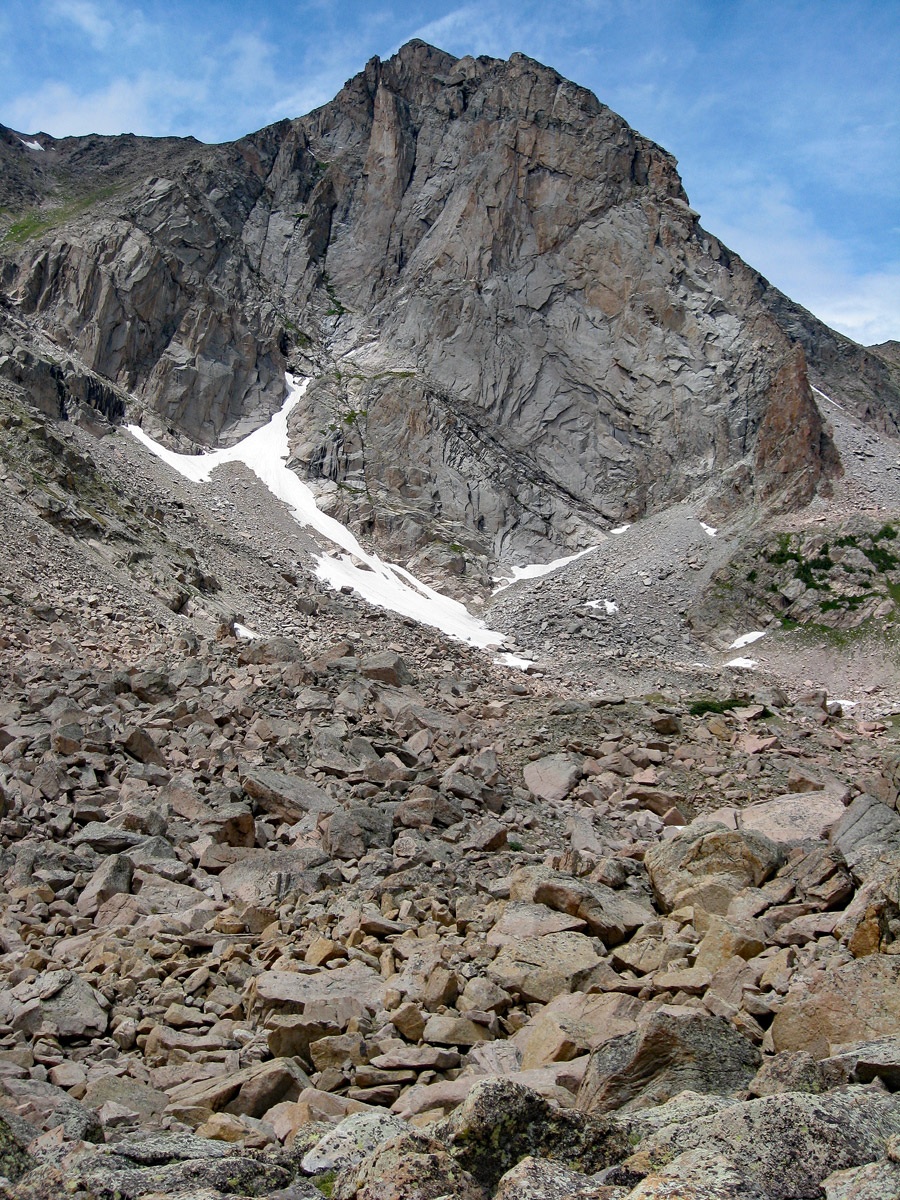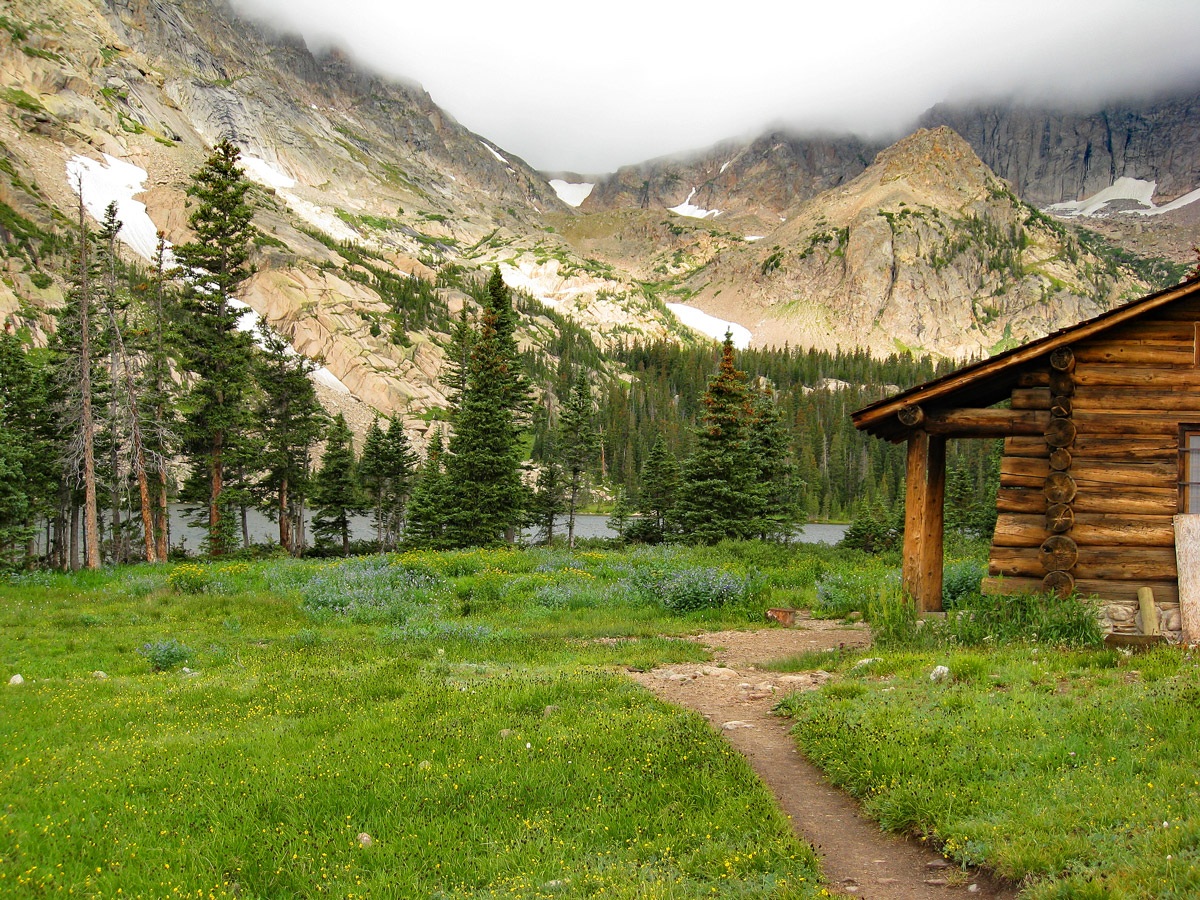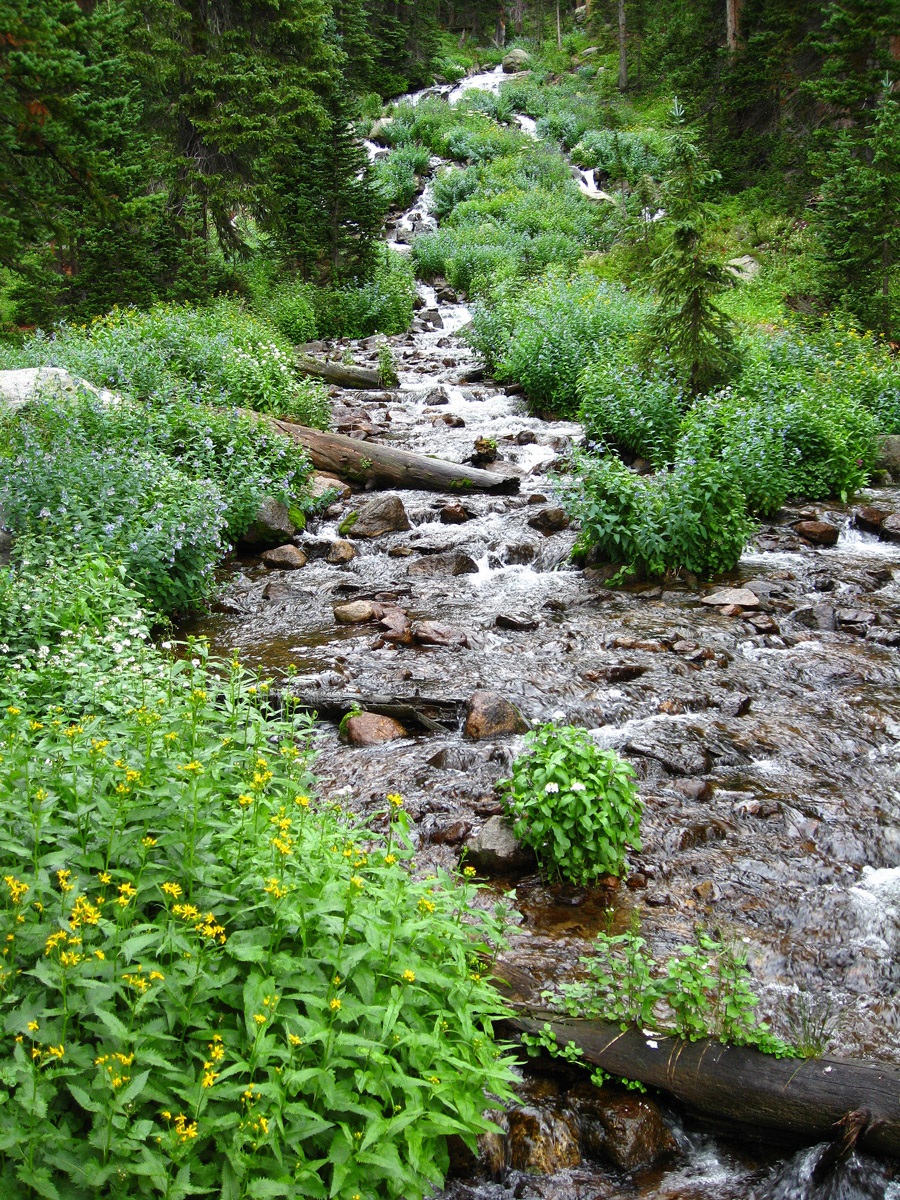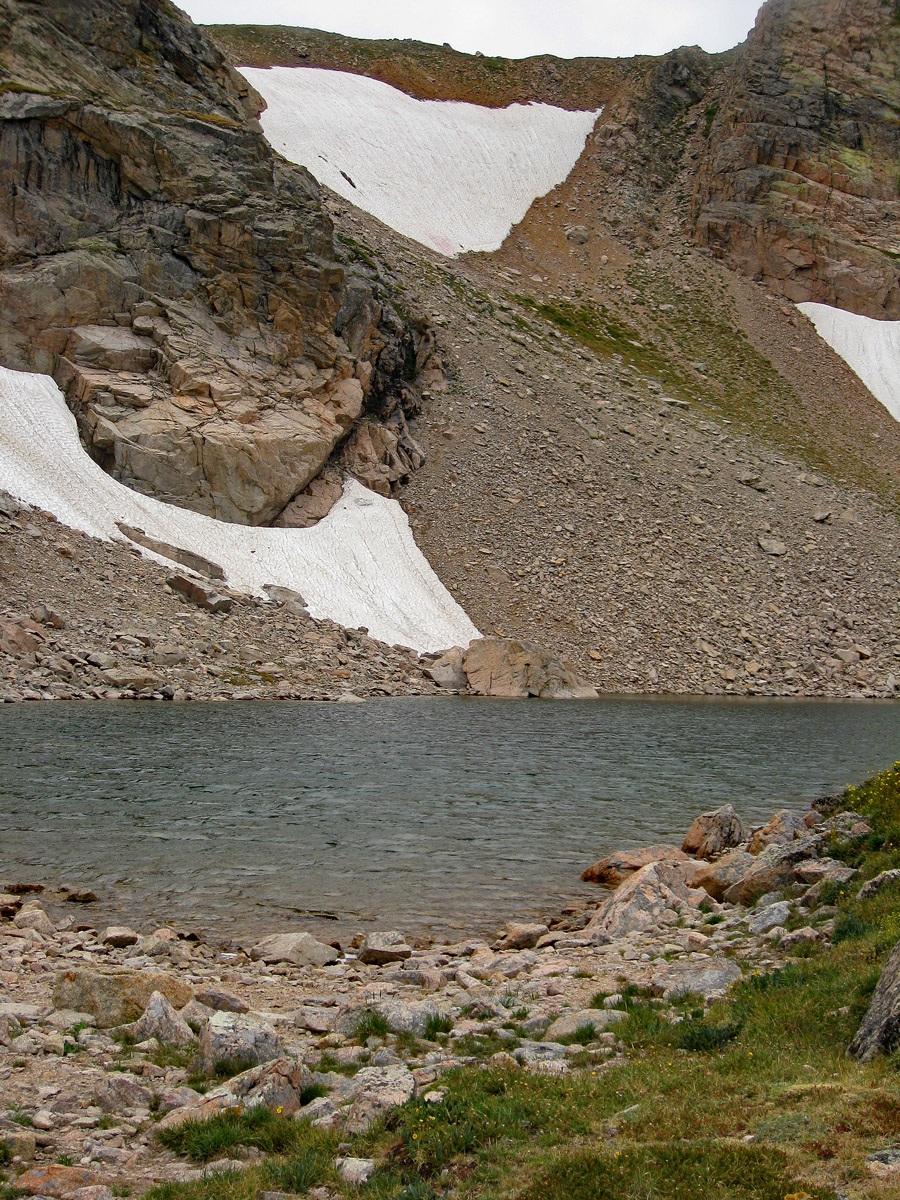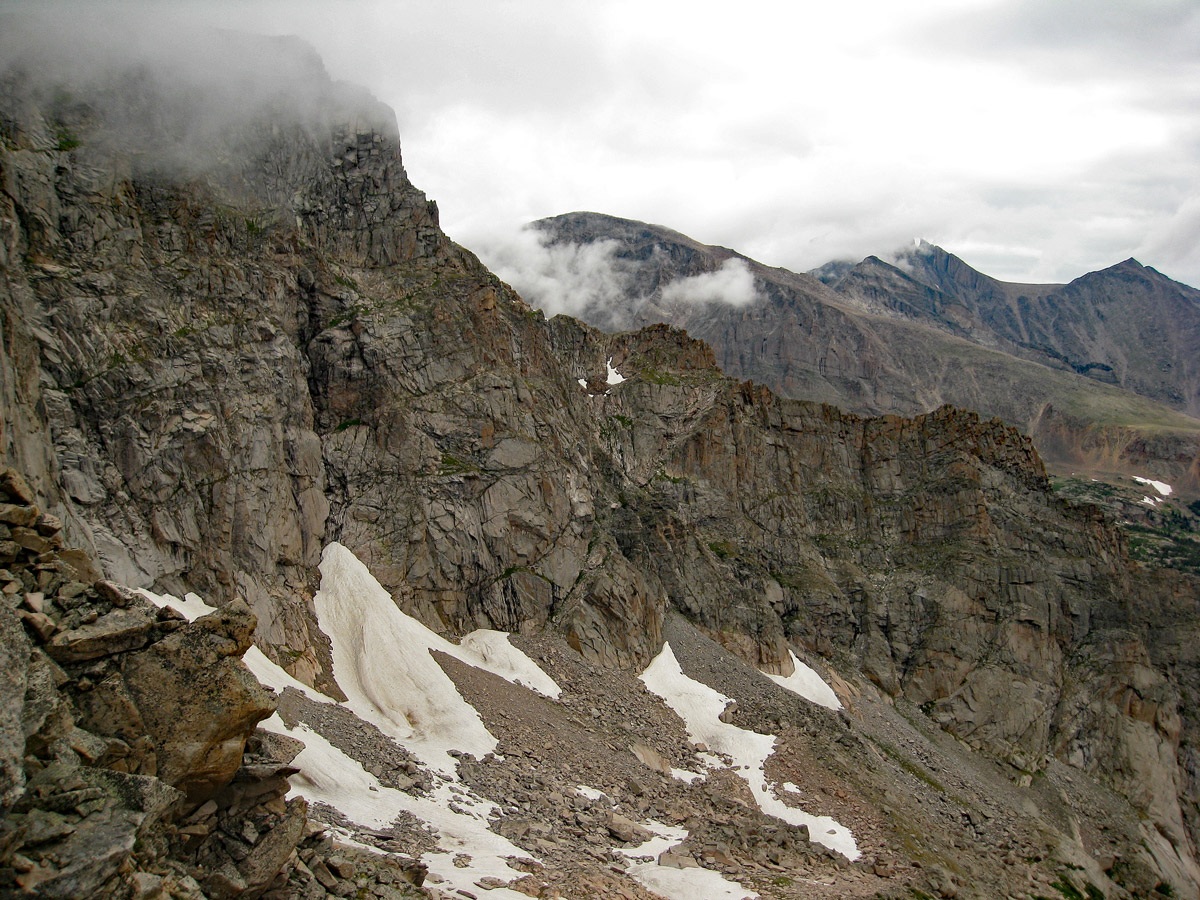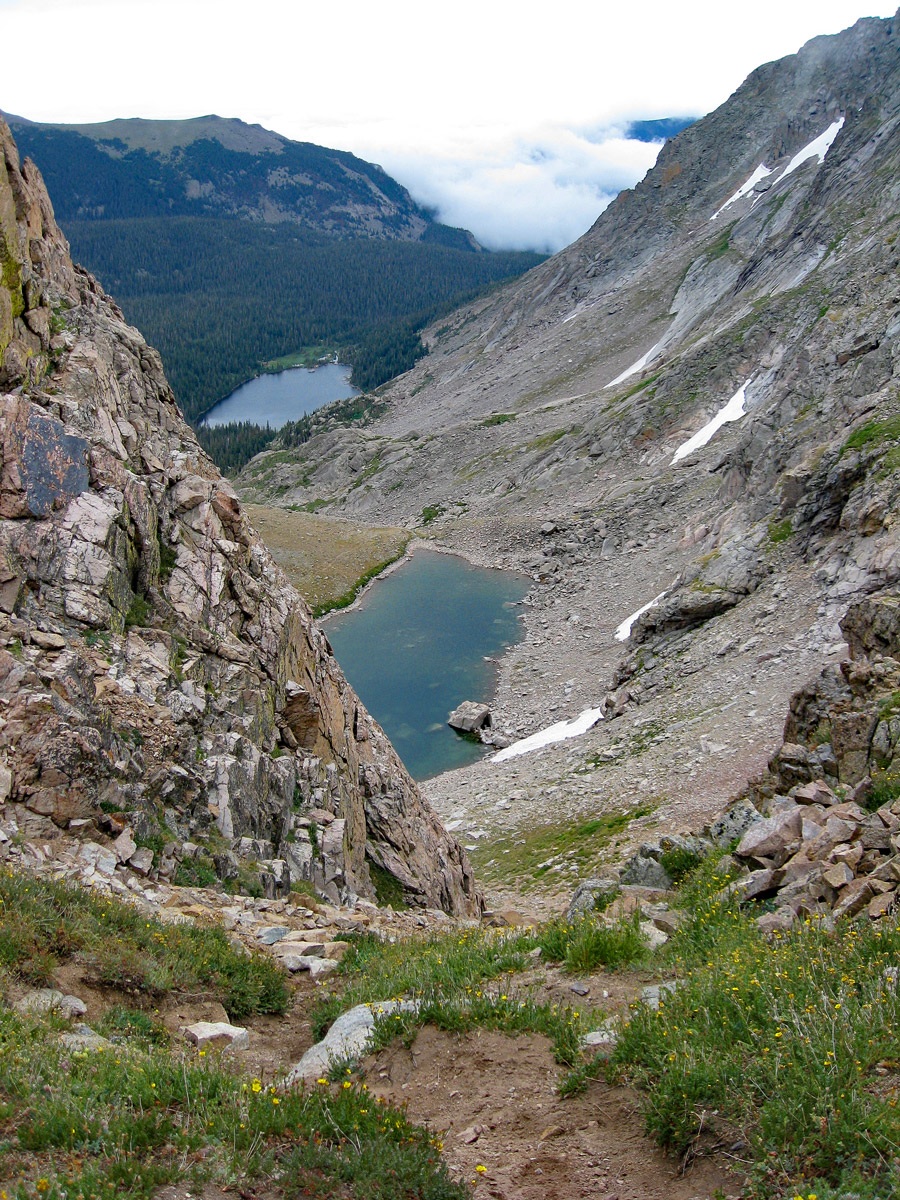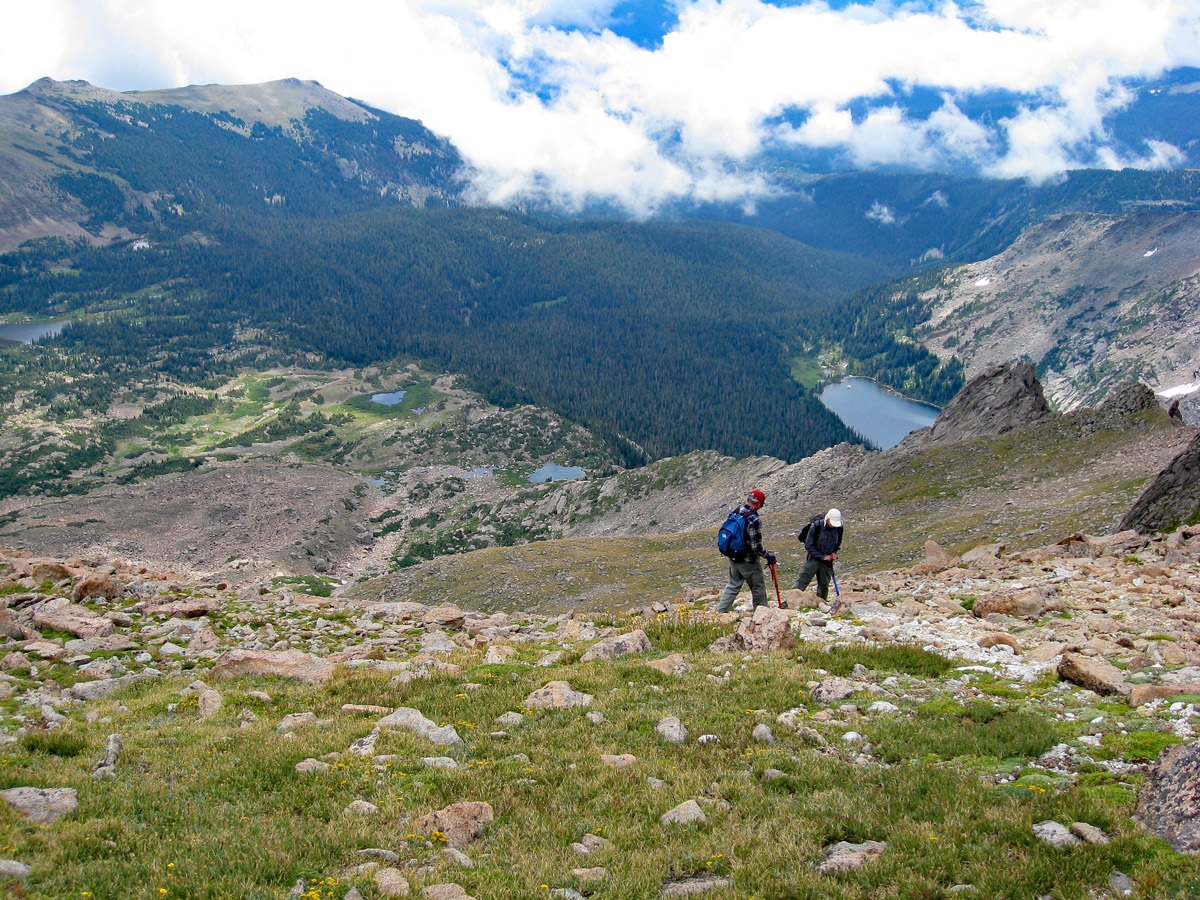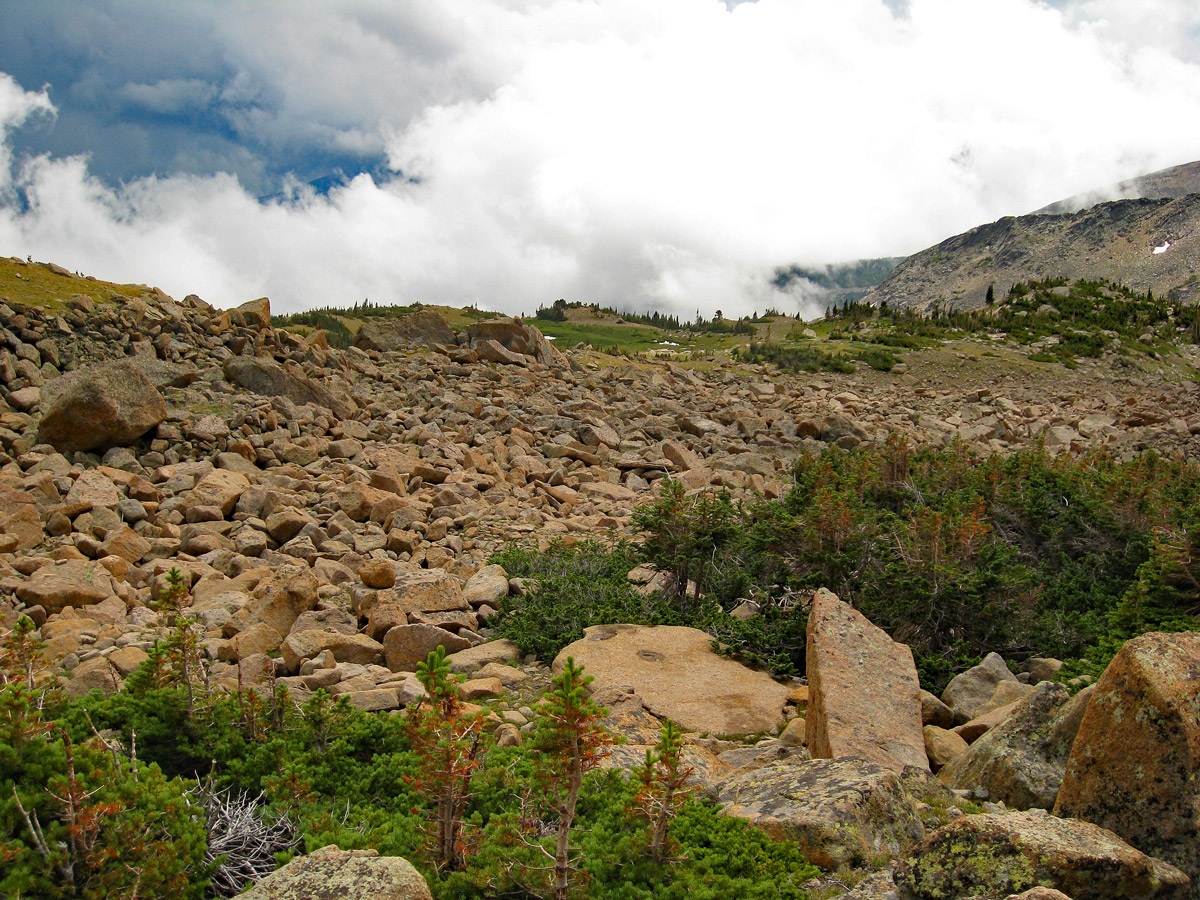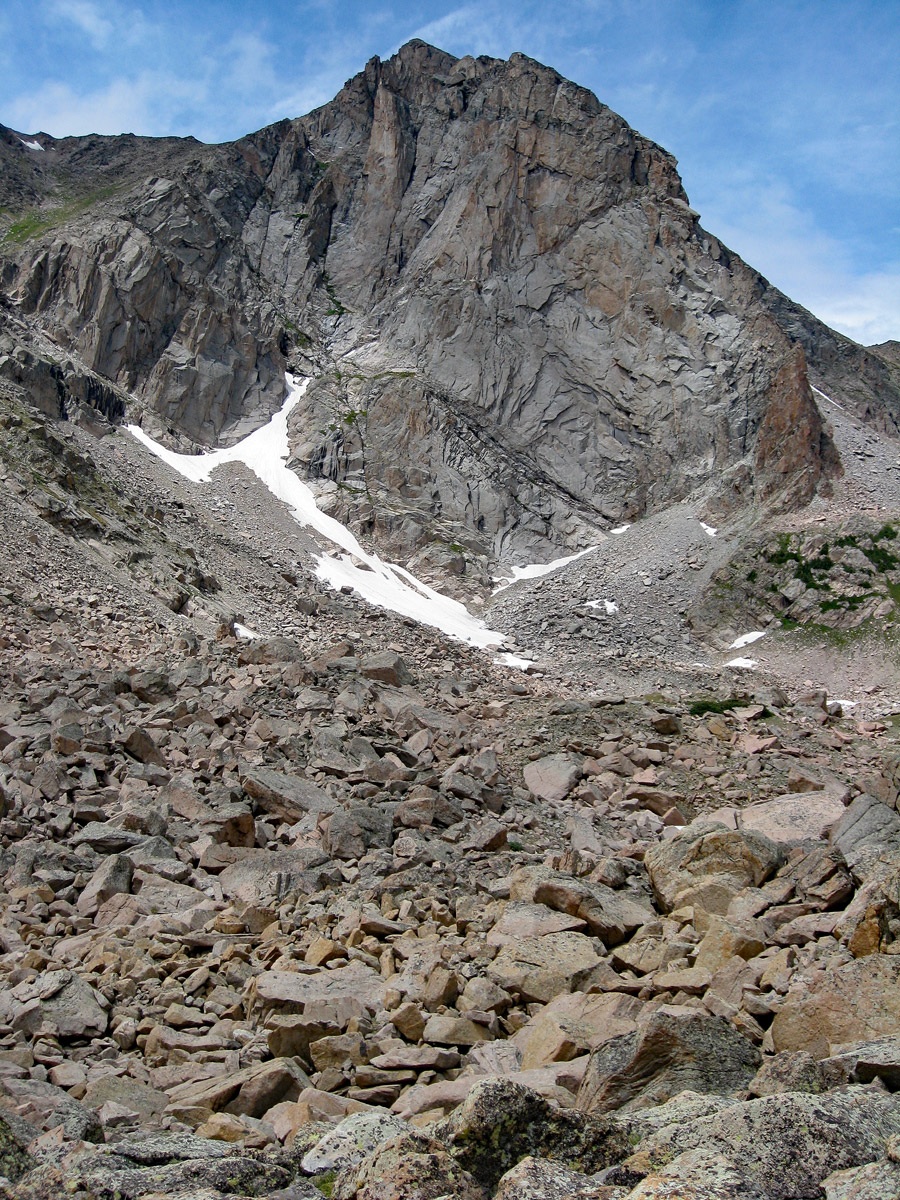LoJ: #378 (Pre-LiDAR #384) / 13,319' Mount Alice
Range ›
Front Range
Quadrangle ›
Isolation Peak
Summit Location ›
 N 40° 14' 21.84", W 105° 39' 50.58"
(Not Field Checked)
N 40° 14' 21.84", W 105° 39' 50.58"
(Not Field Checked)
Neighboring Peaks ›
 Chiefs Head Peak
Chiefs Head Peak
 Pagoda Mountain
Pagoda Mountain
 McHenrys Peak
McHenrys Peak
Peak Summary
Mt. Alice is a Class 2 ascent by its easiest route with a six mile approach just to get to Thunder Lake, where we started our climb from. Mt. Alice also presents one of the largest technical walls in RMNP. The peak can be done as a long day-climb. The RT mileage would come in at over 17 miles from the Wild Basin TH - a hefty day for most mortals. So we did it as part of a backpack trip that also included Isolation and Ogalalla Peaks from Bluebird Lake. Camping in this area requires a backcountry permit and must be obtained months in advance. The Wild Basin trailhead is accessible to any passenger vehicle. While presenting a formidable east face, Mt. Alice has a much gentler side to her. Pre-Lidar elevation was 13,310 ft.
Mt. Alice South Ridge Route
Class 2
Backpack + Medium Day
RT From Wild Basin - Bluebird Lake RMNP:
16.9 mi / 4,810'
RT From
Thunder Lake
:
5.1 mi / 2,735'
From Thunder Lake:
2.80 mi / 2,735' (One-Way)
"Stay in your seat come times of trouble. Its only people who jump off the roller coaster who get hurt." Paul Harvey
Warning!
Climbing peaks can be dangerous! By using this site and the information contained herein, you're agreeing to use common sense, good judgement, and to not hold us liable nor sue us for any reason. Legal Notice & Terms of Use.
